Asset Accounts for Mineral Resources
Nickel. The total nickel reserves in the Philippines has increased by 1.5 percent from 2.02 billion metric tons (MT) in 2013 to 2.05 billion MT in 2018. This increase is mainly attributed to reappraisals recorded during the period, with a net total of more than 158 million MT (Table 1.1 and Figure 1.1). Meanwhile, Class A reserves, or the portion of the total reserves which is commercially recoverable, saw a decrease from 1.03 billion MT in 2013 to 0.95 billion MT in 2018 (Table 1.2 and Figure 1.1). Nickel extraction was stable during the period, ranging from 25 to 35 million MT, with the highest recorded in 2014 (Table 1.2 and Figure 1.2).
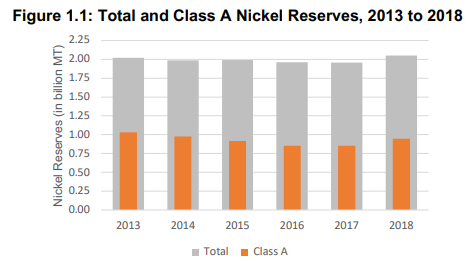
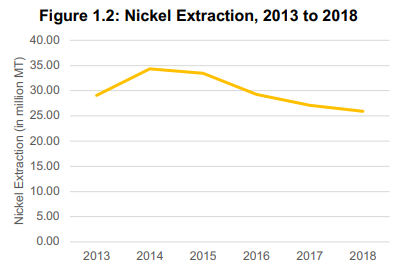
Gold. The total gold reserves in the Philippines has increased by 0.8 percent from 4.85 million kilograms (kg) in 2013 to 4.89 million kg in 2018. This increase is mainly attributed to reappraisals recorded during the period, with a net total of more than 0.13 million kg (Table 2.1 and Figure 2.1). On the other hand, Class A reserves increased by 19.5 percent from 0.543 million kg in 2013 to 0.649 million kg in 2018. This is due to a combined effect of reappraisals and reclassifications with a net total of 0.13 million kg and 0.06 million kg, respectively (Table 2.2 and Figure 2.1). Gold extraction ranges from 0.01 to 0.02 million kg, with highest recorded in 2017 (Table 2.1 and Figure 2.2).

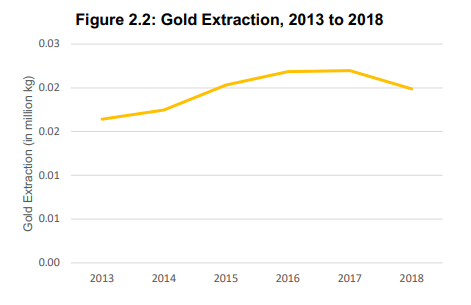
Copper. From 2013 to 2018, total copper reserves in the country has remained on the same level, which is around 1.14 billion MT. This is mainly attributed to the non-activity of copper reserves, that is, an average of about 83.8 percent of the reserves are not yet being extracted (Table 3.5). Meanwhile, Class A reserves has largely increased, from 4.25 million MT in 2013 to 135.75 million MT in 2018, due to a reclassification (Table 3.2 and Figure 3.1). On the other hand, copper extraction declined throughout the six-year period, with the lowest recorded in 2017 (Table 3.2 and Figure 3.2).
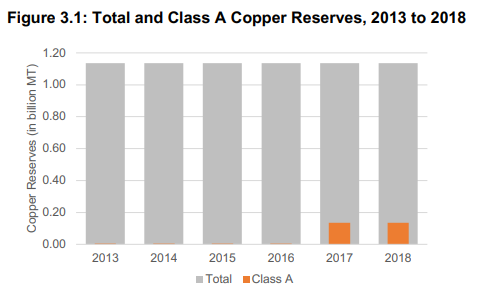
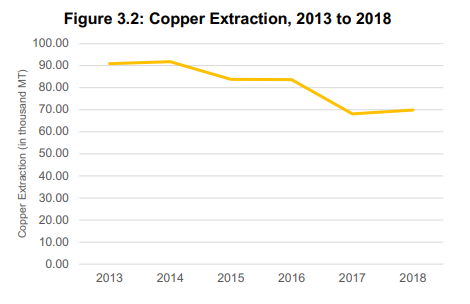
Chromite. The total chromite reserves in the Philippines has increased by 11.2 percent from 40.34 million MT in 2013 to 44.86 million MT in 2018 due to reappraisals. Class A chromite reserves has decreased by 61.3 percent from 8.58 million MT in 2013 to 3.32 million MT in 2018 mainly due to reclassifications (Table 4.2 and Figure 4.1). Moreover, the decrease in Class A reserves is attributed to the extraction of chromite. The largest extraction was recorded in 2014 at 47.06 thousand MT while the lowest was registered in 2015 at 15.50 thousand MT (Table 4.1 and Figure 4.2).

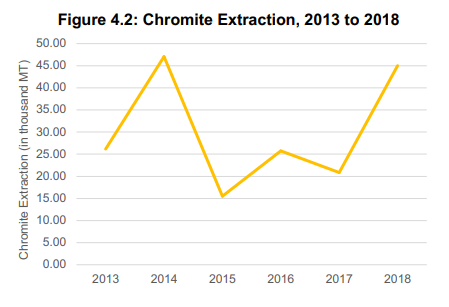
Based on the System of Environmental-Economic Accounting (SEEA) 2012 – Central Framework, the Mineral Accounts of the Philippines aims to provide information on the stocks and changes in stocks of the four metallic mineral reserves. These accounts allow for the monitoring of the sustainability of the extraction of these valuable yet depletable natural assets.
DENNIS S. MAPA, Ph.D.
Undersecretary
National Statistician and Civil Registrar General
